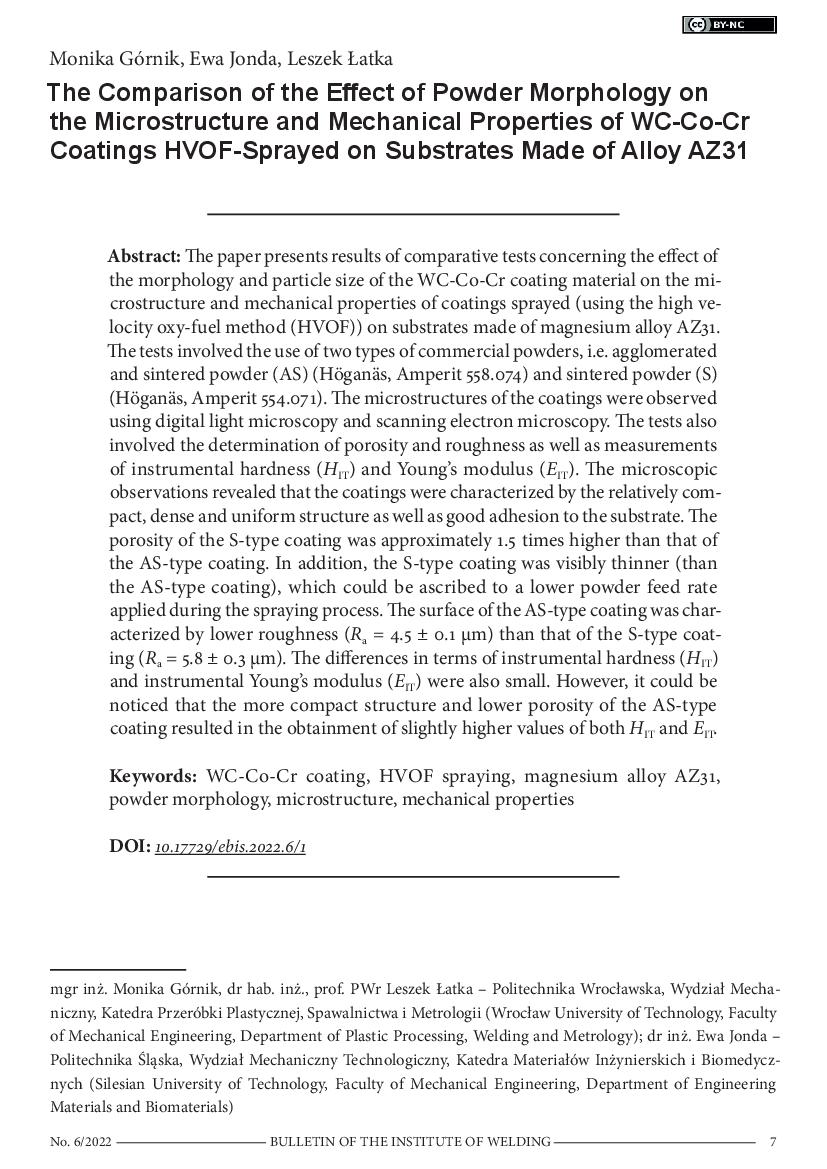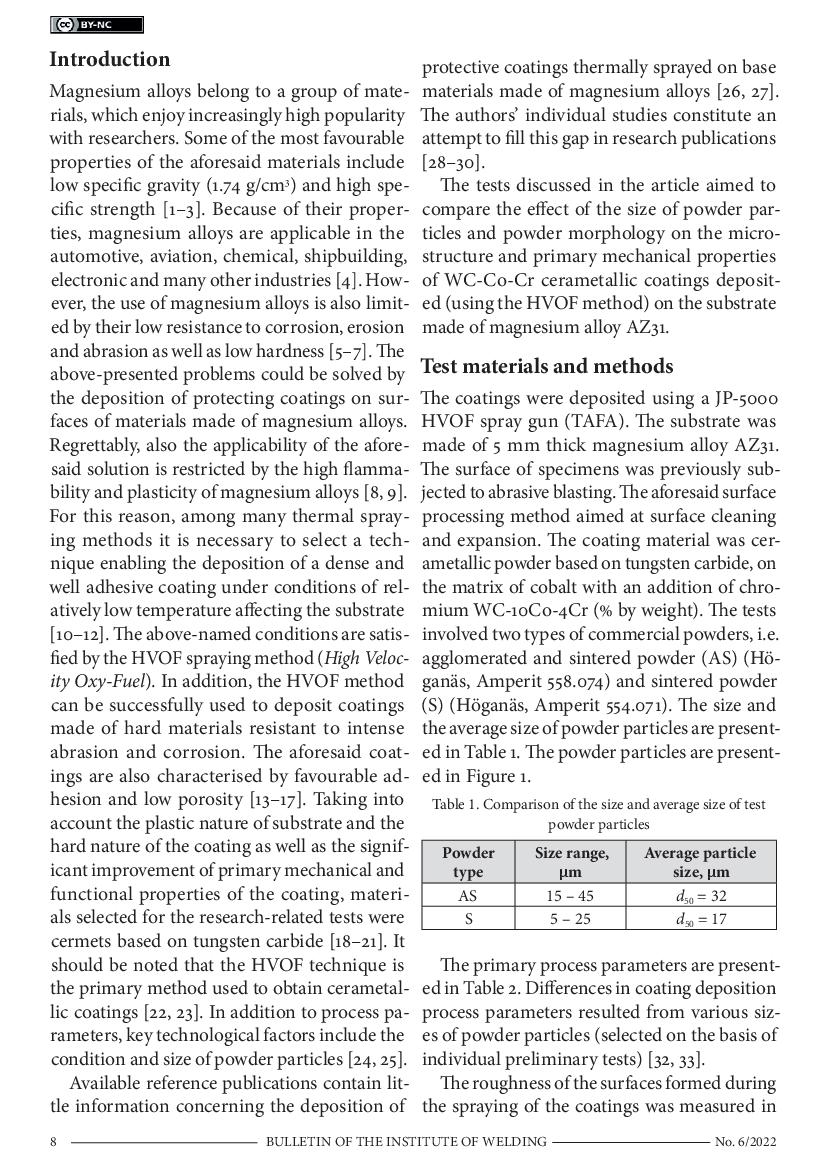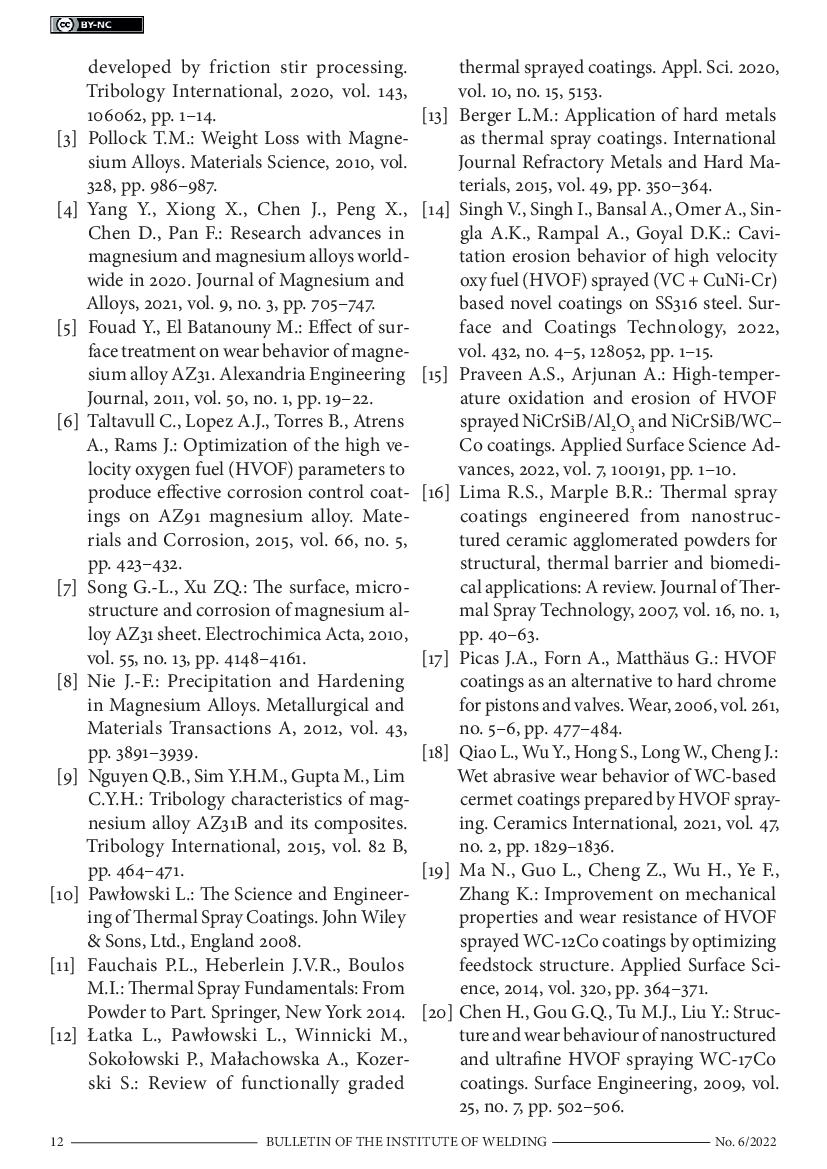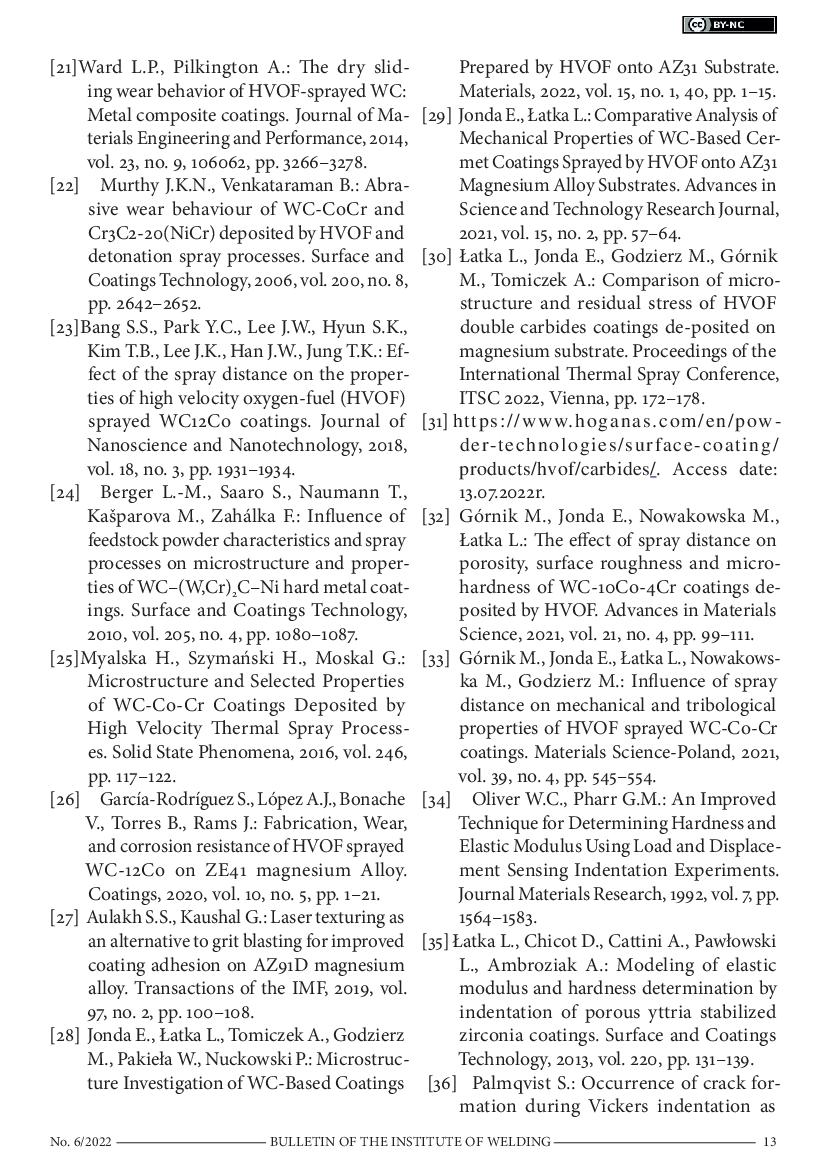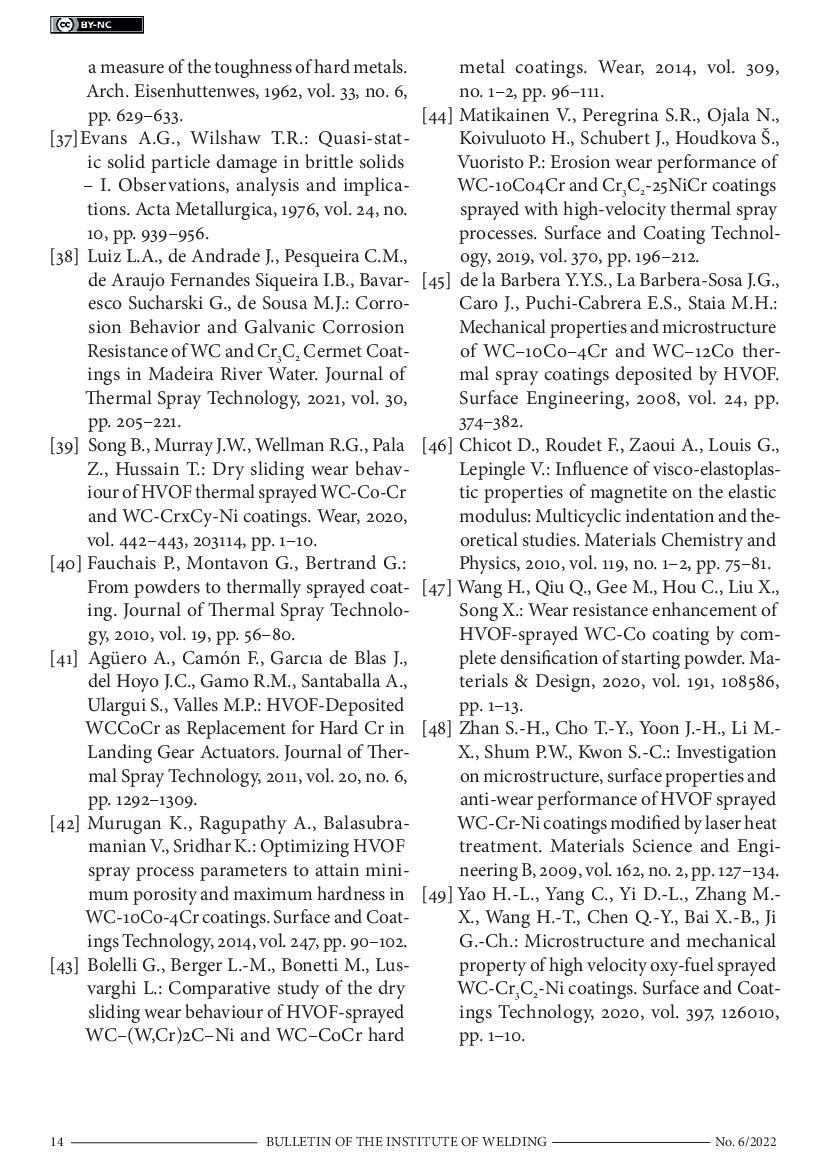The Comparison of the Effect of Powder Morphology on the Microstructure and Mechanical Properties of WC-Co-Cr Coatings HVOF-Sprayed on Substrates Made of Alloy AZ31
The paper presents results of comparative tests concerning the effect of the morphology and particle size of the WC-Co-Cr coating material on the microstructure and mechanical properties of coatings sprayed (using the high velocity oxy-fuel method (HVOF)) on substrates made of magnesium alloy AZ31. The tests involved the use of two types of commercial powders, i.e. agglomerated and sintered powder (AS) (Höganäs, Amperit 558.074) and sintered powder (S) (Höganäs, Amperit 554.071). The microstructures of the coatings were observed using digital light microscopy and scanning electron microscopy. The tests also involved the determination of porosity and roughness as well as measurements of instrumental hardness (HIT) and Young's modulus (EIT). The microscopic observations revealed that the coatings were characterized by the relatively compact, dense and uniform structure as well as good adhesion to the substrate. The porosity of the S coating was approximately 1.5 times higher than that of the AS coating. In addition, the S coating was visibly thinner (than the AS coating), which could be ascribed to a lower powder feed rate applied during the spraying process. The surface of the AS coating was characterized by lower roughness (Ra = 4.5 ± 0.1 µm) than that of the S coating (Ra = 5.8 ± 0.3 µm). The differences in terms of instrumental hardness (HIT) and instrumental Young's modulus (EIT) were also small. However, it could be noticed that the more compact structure and lower porosity of the AS coating resulted in the obtainment of slightly higher values of both HIT and EIT.
DOI: 10.17729/ebis.2022.6/1
 1 / 8
1 / 8
 2 & 3 / 8
2 & 3 / 8
 4 & 5 / 8
4 & 5 / 8
 6 & 7 / 8
6 & 7 / 8 8 / 8
8 / 8

